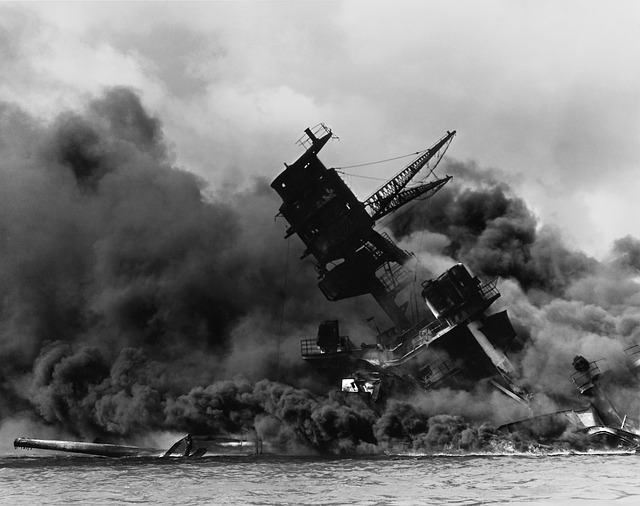On December 7, 1941, Japanese bombs fell on Pearl Harbor. This surprise attack would “awaken a sleeping giant” (Isoroku Yamamoto). Shocked and awakened to the atrocities of war brought to their own soil, the United States of America entered World War II after two years on the side-lines.
For the mainland United States, another bomb would fall on Japanese Americans – President Franklin Roosevelt announced Executive Order 9066. Approximately 120,000 Japanese Americans (most of them citizens) were rounded up and placed in “internment” camps. Some of these families had been in the U.S. for decades. Anyone with “one drop of Japanese blood” (Colonel Karl Bendetsen), down to 1/16th according to California law, could be incarcerated. In a matter of weeks, Japanese Americans had to pack up and leave everything behind; homes, businesses, and possessions had to be sold or lost.
How many cases of Japanese American spies were identified? None.
The Japanese Americans were isolated in several large barrack-style camps across the Western United States.
What was this experience like?
Hidden Memory: An American Story
Award-winning storyteller, Anne Shimojima tells the moving story of her family’s journey from Japan to the United States and through the incarceration camps of World War II. Presented with a slide show of photographs from the Shimojima family and the National Archives. Read more about her online: www.anneshimojima.com
Register for an online Zoom presentation of this program.
Sponsored by the Deerfield Public Library (near Chicago, Illinois).
Tuesday, August 18, 2020
7:30pm Eastern Time / 6:30 pm Central Time
I watched this program live at the Timpanogos Storytelling Festival in 2017. Well-crafted by a master storyteller, this program brings history alive. Anne Shimojima highlights what war and fear can cause a country to do to its own citizens. Register and watch live online on Tuesday, August 18.
